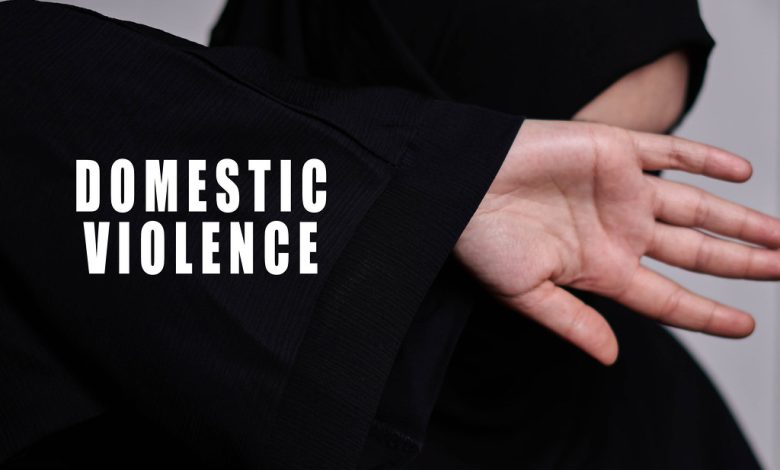What is Considered Domestic Violence?

Domestic violence is the topic of many news stories, but it can be difficult to understand what exactly constitutes domestic violence. People often think it only involves a man physically hitting a woman. However, anyone can be a victim of domestic violence, regardless of age, gender, race, or socioeconomic status.
Understanding what domestic violence is in Indiana and how it can manifest in relationships is crucial for anyone in an abusive situation. Read below to gain a better understanding of this sometimes-fatal societal problem.
What is Domestic Violence?
Domestic violence is a pattern of behavior in which one intimate partner seeks to control and dominate the other through fear, intimidation, and physical or sexual violence. It can happen to anyone, regardless of race, age, gender, religion, or socioeconomic status.
While domestic violence can take many forms, some common behaviors include:
Physical Violence
The most obvious form of domestic abuse is physical. Such actions may include hitting, kicking, biting, choking, shaking, shoving, slapping, using a weapon, or any type of physical force to cause fear or injury.
Physical violence often escalates over time. An abuser may start with threats or pushing and then move on to slapping or choking.
Sexual Violence
Even if you are in a relationship with someone, they cannot force you to engage in sexual acts against your will. This type of assault includes rape, forced sodomy, child molestation, incest, fondling, and sexual coercion.
Keep in mind, that an abuser may also use sex to control or humiliate their victim. For example, they may make their partner dress in a sexual way against their will or force them to watch or engage in pornography. The person may also record sexual acts without the victim’s knowledge or consent.
Emotional Abuse
Just because there is no physical violence does not mean the victim is not suffering abuse. Emotional or psychological abuse is a form of manipulation that can be just as damaging as physical violence, if not more so.
Abusers may try to control their partner’s behavior with threats or intimidation. They may also isolate them from friends and family, make them feel guilty or ashamed, or control all their finances. The abuser may also verbally attack their partner in an attempt to erode their self-esteem.
Economic Abuse
An abuser may also try to control their partner financially in order to keep them in the relationship. They may do this by preventing them from getting or keeping a job, making them beg for money, giving them an allowance, hiding or taking their money, not letting them know about or have access to family income, or making all the financial decisions.
Stalking
Even if someone has ended a relationship, they may still be the victim of abuse from that same individual. The most common type of post-separation abuse is stalking.
An abuser may stalk their victim by following them, showing up at their home or job, sending them threatening text messages or emails, making unwanted phone calls, leaving them unwanted gifts, or vandalizing their property.
While some stalking behavior, such as showing up at someone’s job, may seem harmless at first, it can still be very frightening for the victim and is often a prelude to more violent acts. Sometimes the abuser may pretend to be nice in an attempt to get the victim to trust them again when in reality they are just trying to control them.
Technology Abuse
With the rise of social media and other technological advances, abusers now have more ways to control and stalk their victims. They may do this by checking their victim’s phone or email without permission, logging into their social media accounts, or using GPS to track their whereabouts.
In some cases, it can escalate into cyberbullying when the abuser sends threatening or harassing messages online.
They may also post humiliating or threatening messages on their victim’s social media accounts or spread rumors about them online. In extreme cases, they may even hack into their victim’s computer or install spyware to track their every move.
What Can You Do If You Are a Victim of Domestic Violence?
If you are in immediate danger, the first thing to do is call the police. If you are not in immediate danger but need help, contact the National Domestic Violence Hotline at 1-800-799-SAFE (7233).
There are also many local resources available to help victims of domestic violence. For example, in the state of Indiana, there is the Indiana Coalition Against Domestic Violence, which can provide you with information and support.
Domestic violence is a serious issue, so use as many resources as possible. It is important to hire an attorney who is experienced in handling these types of cases. An attorney at Trapp Law in Indiana can help you get a protective order and represent you in court if necessary.
What Is a Protective Order
A protective order is a court order that can help protect you from an abuser. It is also sometimes called a restraining order or an order of protection.
This civil order prohibits the abuser from having any contact with you. It can also order the abuser to stay away from your home, your work, or your child’s school.
A protective order in Indiana can also grant you ownership over shared pets, vehicles, property, etc. An officer can assist with the removal of the abuser and the abuser’s possessions from the shared home.
In conclusion, there are many ways to fall victim to domestic violence. So, for your safety, make sure you are aware of the signs. If you are a victim of domestic violence, please seek help from the police and get legal representation as soon as possible. Protective orders can help keep you safe, and a domestic abuse attorney in Indianapolis can help you with the process.



